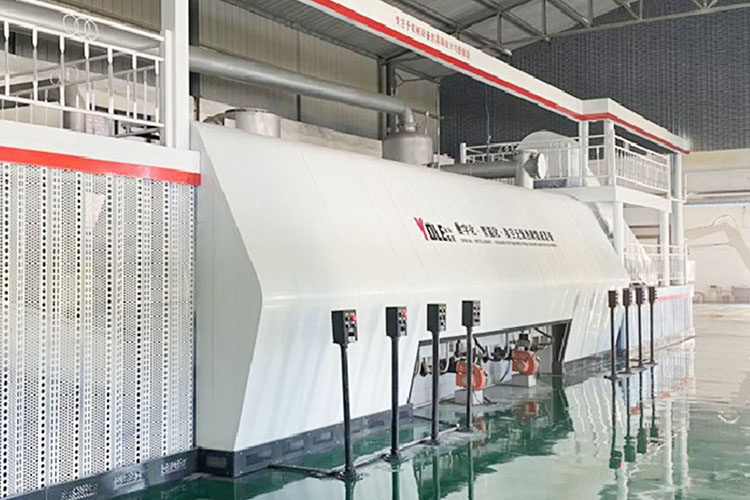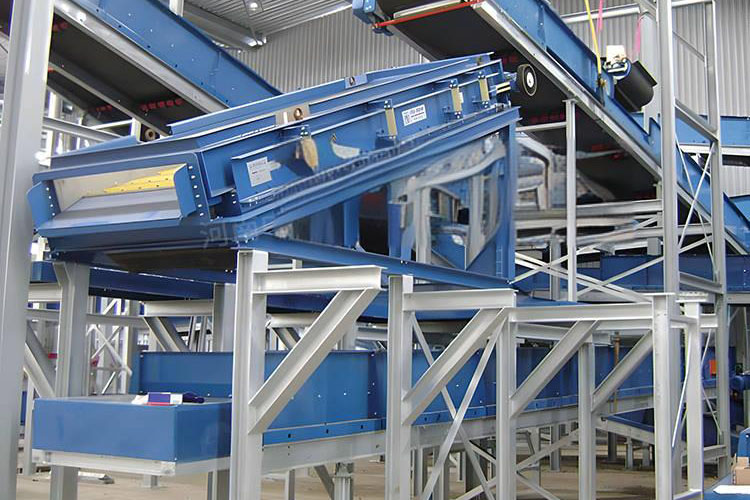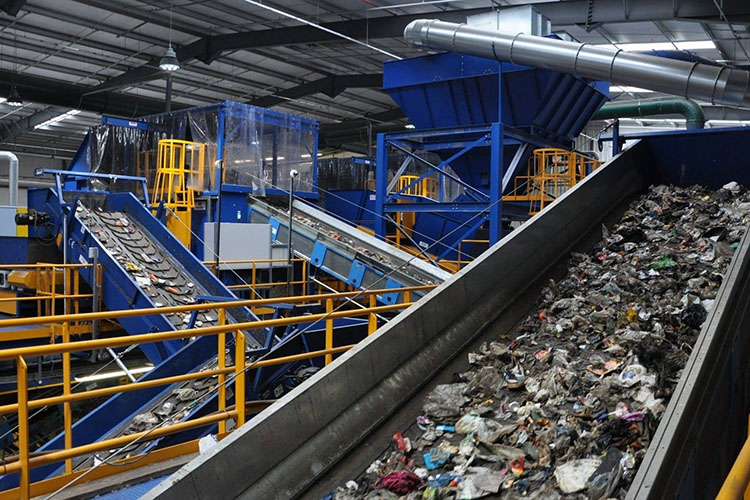Domestic waste treatment equipment plays an important role in today's society, especially in dealing with the growing problem of organic solid waste in cities. With the advancement of urbanization, the amount of domestic waste generated has increased rapidly, and a large part of it is organic solid waste, mainly from kitchen waste and food residues in homes, restaurants, food processing plants and other places. How to effectively deal with these organic solid wastes is not only an important issue of environmental protection, but also related to the rational use and sustainable development of resources. Modern domestic waste treatment equipment has achieved the reduction, harmlessness and resource treatment of organic solid waste through a series of advanced technologies and processes.
The first step in treating organic solid waste is pretreatment. Organic matter in domestic waste is often mixed with other waste, such as non-degradable substances such as plastics, metals, and glass. Therefore, before treating organic solid waste, it is necessary to sort and pretreat the waste first. The process of waste pretreatment usually includes steps such as screening, crushing and sorting. Large objects and hard substances are separated from organic waste by mechanized equipment, and the waste is crushed to reduce the volume for subsequent treatment. Pretreatment can not only improve the efficiency of organic waste treatment, but also maximize the recovery of reusable resources.

Next is the garbage sorting process. In domestic garbage, in addition to organic matter, there are many recyclable materials such as paper, plastic, metal, etc. In this step, garbage treatment equipment usually uses physical or optical methods to classify organic matter from other garbage. Advanced sorting equipment can separate different types of substances according to the density, magnetism or color of garbage. After further treatment, the sorted organic solid waste can enter the core organic waste treatment process.
One of the core technologies for organic solid waste treatment is anaerobic fermentation. Anaerobic fermentation is a process that uses microorganisms to decompose organic matter in an oxygen-free environment. The collected organic solid waste is placed in an anaerobic digester, and microorganisms decompose organic matter to produce biogas, the main components of which are methane and carbon dioxide. Methane is an important energy source. After purification, it can be used for power generation or heating to achieve energy recycling. Anaerobic fermentation can not only reduce the volume of organic solid waste, but also realize the recycling of waste resources by producing biogas. At the same time, the residue after anaerobic fermentation can be further processed into organic fertilizer for agricultural production.

In addition to anaerobic fermentation, composting is also a common way to treat organic solid waste. Composting is a process that relies on the natural decomposition of microorganisms in an aerobic environment. Organic waste is piled together, and the reproduction and metabolism of microorganisms are promoted by controlling conditions such as temperature, humidity and ventilation, and the organic matter is finally converted into decomposed organic fertilizer. The composting treatment method is relatively low in cost and suitable for large-scale organic waste treatment. However, the composting time is relatively long, usually taking several weeks to several months to fully decompose. Organic fertilizer after composting treatment is rich in nutrients and can be used in agriculture, gardening and other fields to further realize the recycling of resources.
In the process of organic solid waste treatment, energy recovery is also a highlight. Whether it is biogas produced by anaerobic fermentation or organic waste treated by incineration, the heat generated can be used for power generation or heating. This energy recovery can not only reduce dependence on fossil energy, but also reduce garbage disposal costs, and promote dual benefits of economy and environment.

Finally, the treated residue may still need final treatment. Not all organic solid waste can be completely converted into useful resources. If the treated residue cannot be reused, it is usually safely landfilled or otherwise treated to avoid further pollution to the environment. However, through modern waste treatment technology, the volume of residue has been greatly reduced, and the landfill volume and environmental impact have been effectively controlled.
In general, modern domestic waste treatment equipment ensures the effective treatment of organic solid waste through multiple links such as pretreatment, sorting, anaerobic fermentation, composting and energy recovery. These technologies not only reduce the harm of organic waste to the environment, but also achieve efficient recycling of resources. With the continuous advancement of technology and the expansion of application scale, domestic waste treatment equipment will continue to contribute to global environmental protection and sustainable development in the future.
Yongle Environmental Protection is mainly engaged in the research and development, production and sales of complete sets of technical equipment for organic solid waste disposal and comprehensive utilization. Production and manufacturing, domestic waste treatment equipment, tire pyrolysis equipment, medical waste disposal equipment, hazardous waste disposal equipment, and achieve efficient and comprehensive utilization of resources through independently developed low-temperature anaerobic pyrolysis equipment technology solutions.
Tags:How does domestic waste treatment equipment treat organic solid waste, domestic waste treatment equipment,YONGLE GROUP
 Latest news
Latest news


























